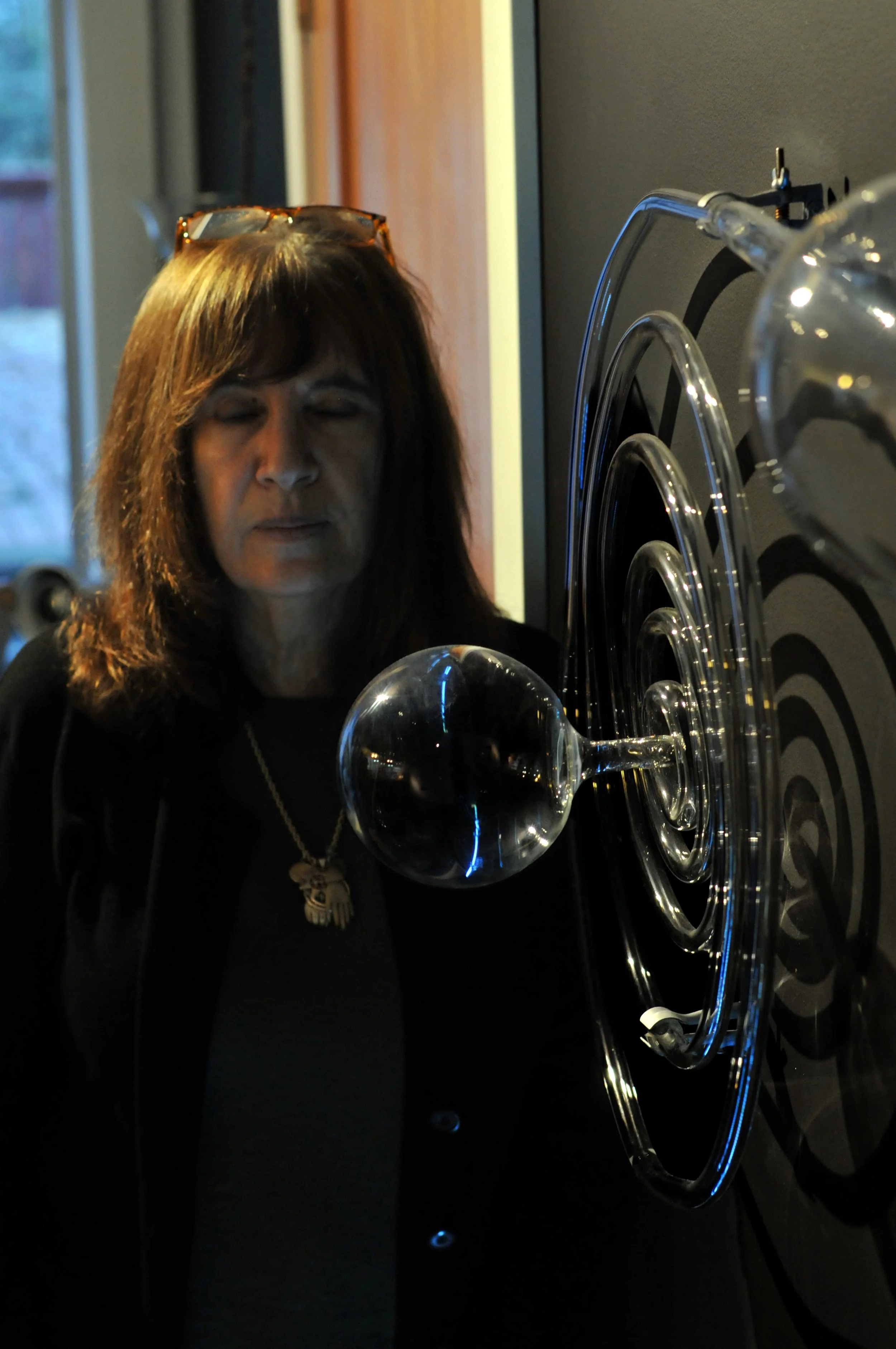I was first drawn to installation during a stay in Italy in 1983. Works I’d only experienced as individual objects or rectangles of paint in the US museums came alive in the context of a living culture that included not only high art but landscape, architecture, crafts and ritual, in a seamless daily gestalt of meaning. For the first time I saw the relationship between “culture” in the artistic sense and “culture” in its broader definition. This inspired my desire to recreate this immersive experience, in contemporary terms, for my viewers. Along with the sculptural works that form the landmarks of my installations, I’ve grown crops that were harvested by local gleaners, made artist’s books, and built small buildings that could be entered— implementing any strategy to invite the viewer to “take action” within the work. I began as a crafts artist and still use the sensual qualities of materials to draw audiences in.
For twenty-five years I’ve used video projections to animate architectural spaces or sculptures, giving a sense of living memory to inanimate objects. Interactivity is central to the conceptual framework of my practice and I use both creative coding and design of the physical settings to invite viewers to engage with the work and to experience themselves as part of it. Live coding adds a mysterious dimension of responsiveness to the environments I create.
Our world is layered with narratives that are rich, confusing and contradictory. My work brings these layers to life—many of my installations integrate performance and public events such as community meals, or collaborations across disciplines. This kind of participation fosters the deepest engagement. Seducing with strange beauty, I create a mood of reverie in which time slows down.
My installation/performance work, Generativity, operated between the sensuousness of the natural world and the increasingly technological way we interface with it. Generativity investigated Eco/Eros, immersing viewers in a video, sound and sculptural landscape in dialog with their movements and position within the space. The Borderline series of installations investigates the intersection of climate change, migration and surveillance. In each of four sites, creative coding combined government surveillance video at the border, scientific images tracking climate change, and US Forest Service footage of natural disasters. Live video feeds startled viewers as they found themselves merged with infrared surveillance video of migrants at the border, part of the desperate caravan. Borderline; The Map is not the Territory used monumental projection scrims mounted on curving supports to carve pathways through the cavernous atrium of the Portland Art Museum. Borderline/Mapping’s software synched a dystopian collage to the columns and walls of the gallery at OpenSignal PDX.. As each set of images shifted in response to randomness programming the mood shifted between moments of hopefulness and despair.
An artist’s job is to see what others can’t or won’t see. Through immersive, interactive technology Borderline brought together images of both the crisis and threads of hope of this time. Most recently projects like Within the Caldera, Chrysalis and Mar, Mar e Mar take a deeper look at our entwinement with the natural world, using the “embodiment” principles of Bhutto practice to marry human and nonhuman lifeforms. By immersing viewers in these at times challenging environments, my work provokes reflection on how our seemingly disparate emergencies are both completely intertwined and all enveloping.
- Fernanda D’Agostino
